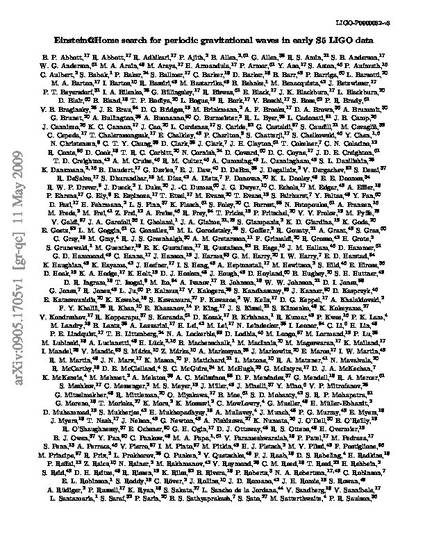
This paper reports on an all-sky search for periodic gravitational waves from sources such as deformed isolated rapidly spinning neutron stars. The analysis uses 840 hours of data from 66 days of the fifth LIGO science run (S5). The data were searched for quasimonochromatic waves with frequencies f in the range from 50 to 1500 Hz, with a linear frequency drift ḟ (measured at the solar system barycenter) in the range -f/τ<ḟ<0.1f/τ, for a minimum spin-down age τ of 1000 years for signals below 400 Hz and 8000 years above 400 Hz. The main computational work of the search was distributed over approximately 100000 computers volunteered by the general public. This large computing power allowed the use of a relatively long coherent integration time of 30 hours while searching a large parameter space. This search extends Einstein@Home's previous search in LIGO S4 data to about 3 times better sensitivity. No statistically significant signals were found. In the 125-225 Hz band, more than 90% of sources with dimensionless gravitational-wave strain tensor amplitude greater than 3×10-24 would have been detected. © 2009 The American Physical Society.
Available at: http://works.bepress.com/tiffany_summerscales/164/
